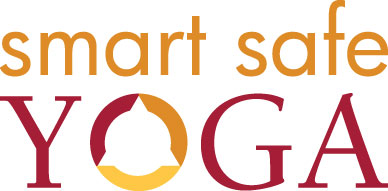
Stretchasana
The common misunderstanding of yoga as merely “stretching” can lead to some not so smart or safe yoga practices. Yoga is more than stretching. The definition of yoga is, in one word, unity (of body, mind and spirit). Without discounting mind and spirit, understanding the physical aspect of yoga will enhance the overall experience of unity. As you explore your body’s abilities on the mat, you will undoubtedly experience the sensation of stretch. Stretching has many benefits including improved circulation, joint mobility and muscle elasticity. Understanding the science of stretching will improve your safety on the mat and your enjoyment.
Stretching Methods
There are several methods of stretching. These include:
- Static – considered a passive stretch (muscles not active during stretch) but pushed to end range/tolerance.
- Passive (or relaxed) stretching – is a form of static stretching. However, with passive stretching, you relax into a pose letting your body weight, or gravity, stretch your muscles.
- Active stretching – is when you use antagonistic muscle groups (muscles that oppose the muscle you are stretching) or agonist (the muscle group you are stretching) to facilitate a reflexive response that neurologically relaxes the muscle you are stretching. Active stretching is accomplished by the voluntary use of one’s muscles without external aid.
- Ballistic – dynamic bouncing in and out of stretches
These methods of stretching can be combined. A stretch can start out passive but then become active as you contract muscle groups while in a pose. Or, you may actively move into a position and then use your hands to assist holding your leg in a position. No method is right or wrong, but active stretching and active assisted stretching tend to offer more control and are therefore safer.
Why does it matter what type of stretching as long as I get a stretch?
When practicing yoga , it is important to move with control and to stay tuned to the sensations of the body. “No pain, no gain” is NOT a mantra of yoga. When doing static or passive stretching, it is useful to consider that we may be compressing a joint or straining a ligament which is usually accompanied by an unpleasant sensation. This is not generally a goal unless there is a therapeutic reason for doing so and you know what you are doing and why. More often a pleasant sensation of stretch in the center of a muscle is desired and therapeutic. This may seem obvious to some, but many people may feel that getting through the unpleasantness is part of the process. Perhaps this is true in rare cases.
How hard should I push?
It is generally not recommended to stretch a muscle at its tendon (its insertion point on a bone) or to stretch a ligament. This may happen if you push too hard, have weakness in a muscle, and/or lack the strength to control joint movement . Stretching a tendon doesn’t feel very good. If you find that certain poses result in discomfort despite your efforts to control the motion, you may need to work on muscle strength or modify until the sensation is less intense. Improving your body awareness and understanding your body’s limitations will help you determine when it’s safe to push, and when it’s smarter to yield.
What makes me so….inflexible?
Limitations in flexibility are due to more than just muscle tightness, and include joint structure, ligaments, tendons, neural mobility and genetics1. In fact stretching does not necessarily improve length in muscle fibers. Improved flexibility and range of motion in joints is due to increased stretch tolerance rather than increased muscle length2. The word tolerance in this context means adaptation. Tolerate also means to accept and endure. Through practice, repetition and technique we learn to let go (rather than accept and endure) which creates a shift in not only our physiology, but perhaps the psyche. Flexibility is defined as range of motion in your joints, but also as the ability to bend without breaking or willingness to compromise. To consider these polysemous words in the bigger context of yoga, we start to understand that practicing yoga embodies more than the physical.
Keeping it safe
The safest way to apply the principle of strength with flexibility is to stretch with the muscle around the joint while toned (in an active state). An example of this would be in dhanurasana (bow pose) where you are on belly grasping ankles, you press the ankles into the hands to use the quadriceps (agonist) while you are stretching them. Likewise in padangustasana (hand to foot pose mimicking a hamstring stretch) you activate the quadriceps (antagonist) to reciprocally relax the hamstrings. Actively moving into a pose and then gently contracting either the muscle(s) being stretched or the opposing muscles is the safest method of stretching. Passive stretching may be more intense, but is intensity necessary or safe?
Finding balance
Hatha yoga should be a balance between strength, flexibility and relaxation. An overly flexibly muscle that has little strength may not function properly in everyday life. Similarly a very stiff muscle or joint may be unable to function properly. If we gently activate muscles while in stretching positions we protect the joints and we learn to respect our limitations and vulnerabilities at any given moment. The balance of wanting to go further and knowing when to stop is experienced as is the understanding of what yoga is truly about. Now that is practicing smart safe yoga!
How do you know where your limits are in stretching?
How do you cue your students in practice?
Drop us a comment and let’s all “stretch” our understanding of Smart Safe Yoga

Thank you for helping guide people to keep yoga safe!
Thank you for taking the time to read and comment Mary Ellen. I’m happy to help:)